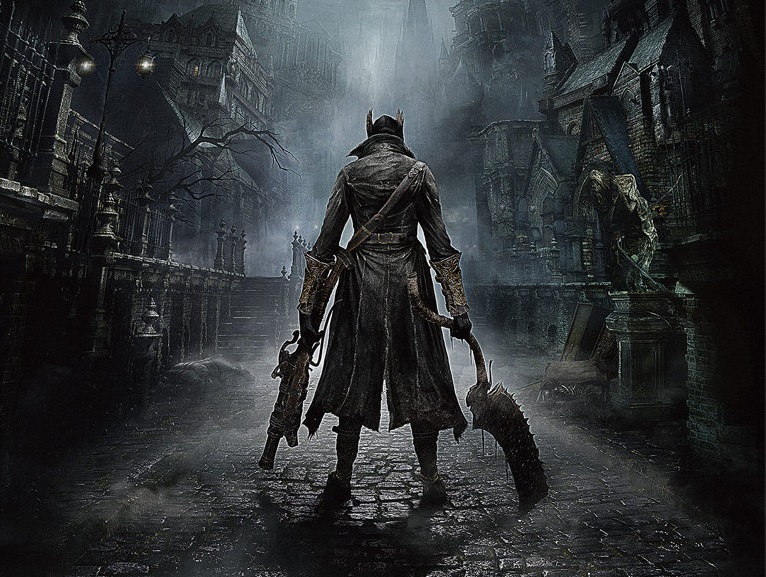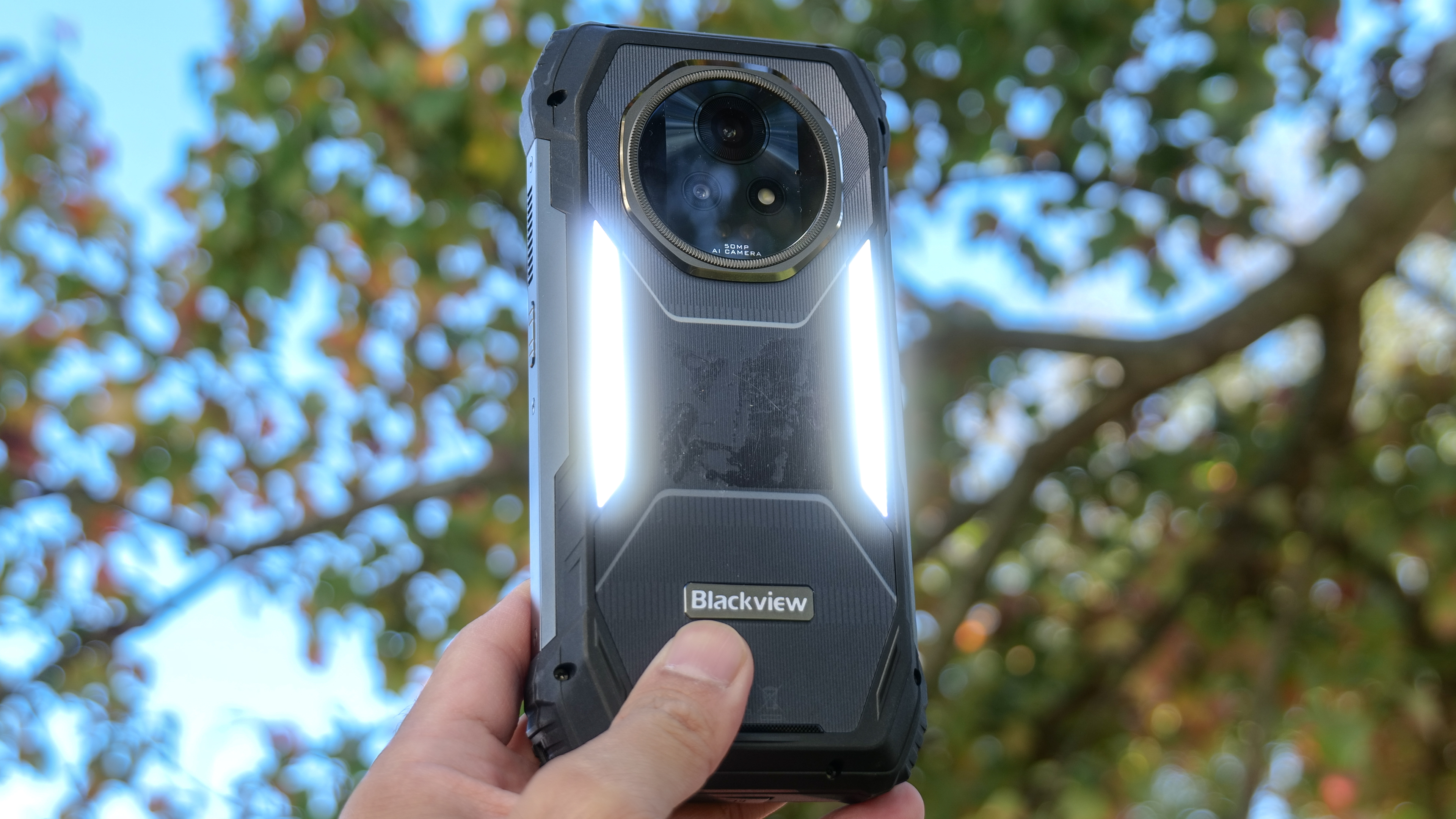Tom's Guide Verdict
Bloodborne is an exceptional game for both longtime fans and newcomers, but it's a little less delightfully vexing than its predecessors.
Pros
- +
Gorgeous, interconnected world
- +
Exciting, fast combat
- +
Eerie sound and visuals
- +
Weird characters and lore
Cons
- -
Not as complex as predecessors
- -
Some graphical oddities
Why you can trust Tom's Guide
Mist obscures the majestic cathedral spires. A distant bell tower chimes the witching hour. A gas lamp spills its pale light onto the damp cobblestones. High overhead, a blood moon lights up the city of Yharnam in unholy crimson. Facing down the interminable night, one hunter stands alone — and that hunter will die. Welcome to Bloodborne.
Bloodborne ($60) is a PS4-exclusive action/role-playing game developed by From Software, the Japanese company that brought you Demon's Souls, Dark Souls and Dark Souls II. However, while Bloodborne is an exceptional game for both longtime fans and newcomers, it's also just a little less delightfully vexing than its predecessors.
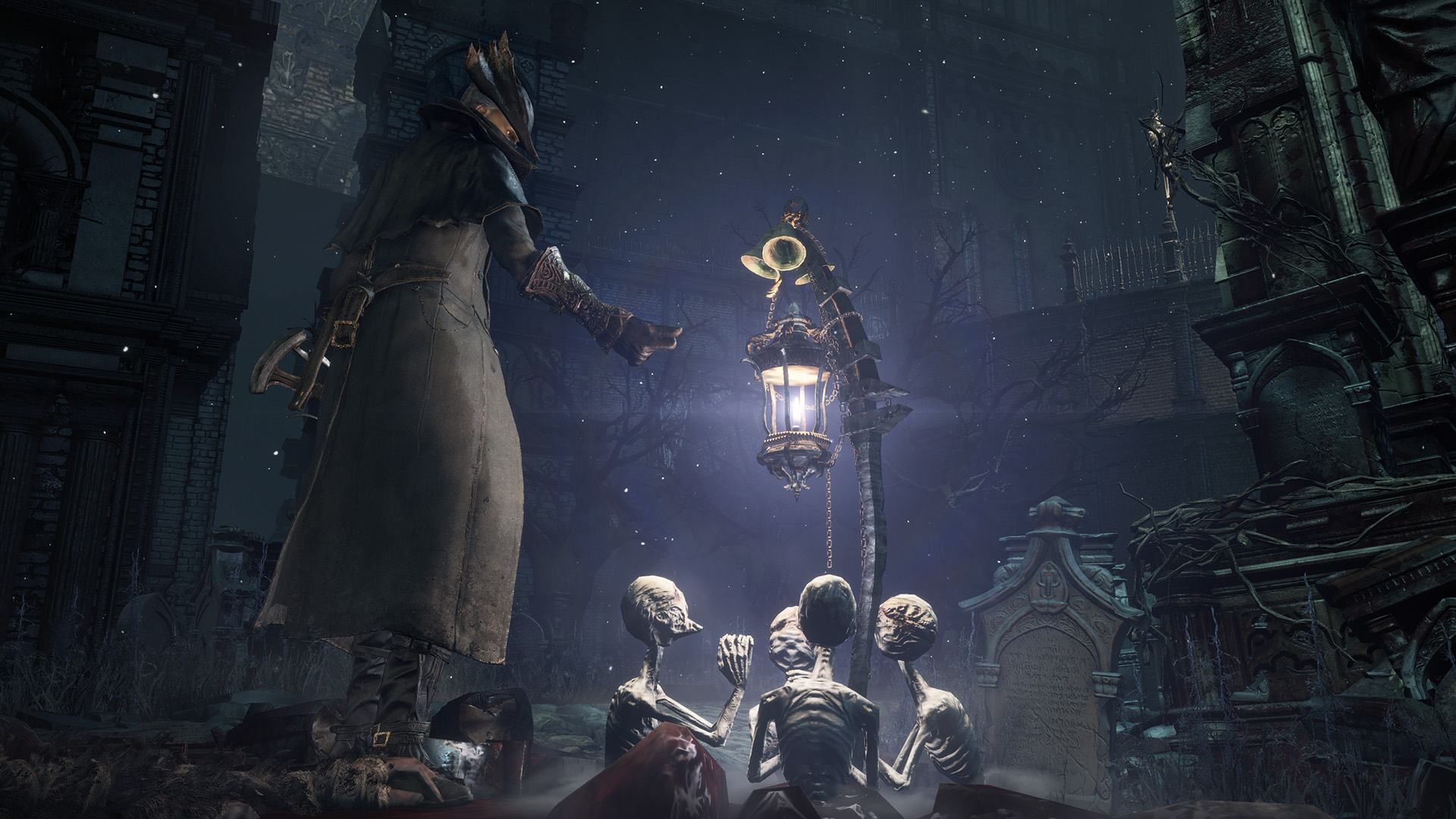
Gameplay: The Hunt Begins
Once you create a demon hunter (you can customize his or her name, sex, appearance and origin story) and select your weapons, you set off into the city of Yharnam to do battle with the crazed townsfolk, monstrous ogres and skeletal werewolves that dwell therein.
MORE: Bloodborne: Everything You Need to Know
The game's difficulty is one of its defining points. Regular enemies can kill you in three or four hits, and bosses require even fewer. The level design will run you off of cliffs, into enemy strongholds and through ancient labyrinths teeming with traps.
Each enemy you defeat leaves behind "blood echoes" — aspects of its powers that you can use to improve your stats, strengthen equipment and buy items. If you die, the blood echoes you've gathered linger behind. You'll have one chance to retrieve them, but if you die trying, they're gone forever. When you fall prey to a run-of-the-mill villager with a pitchfork while on your way to collect tens of thousands of souls, you will spout curses that you didn't even know you knew.
Both attacking and dodging enemies consume stamina, which recharges between actions. If you run out of stamina when that giant boss has one sliver of health left and is about to pound you flat, you're out of luck.
Managing stamina is crucial to combat, and Bloodborne's wealth of options makes it challenging to do so. From basic attacks, strong attacks and switching weapons, to secondary forms, backstepping and rolling, there are plenty of ways to fight.
Get instant access to breaking news, the hottest reviews, great deals and helpful tips.
Bloodborne speeds up combat through the inclusion of guns and the regain system, which gives you a chance to recover health during battles. By interrupting enemy attacks with a pistol or shotgun blast, you can bring foes to their knees and inflict critical damage. If you get hit, you have a brief window to regain some health by striking back. As always, combat feels precise, demanding and utterly exhilarating.
As before, the game incorporates both synchronous and asynchronous multiplayer gameplay. You can team up with other players to conquer bosses, invade their worlds to slaughter them and leave messages to help or hinder their progress.
New to the game are the Chalice Dungeons — procedurally generated areas full of unique enemies, equipment and bosses. You can tackle Chalice Dungeons alone or with friends, and share online. All of the multiplayer features enhance Bloodborne, but if you prefer to play alone, you're not missing much (except the messages, which are important).
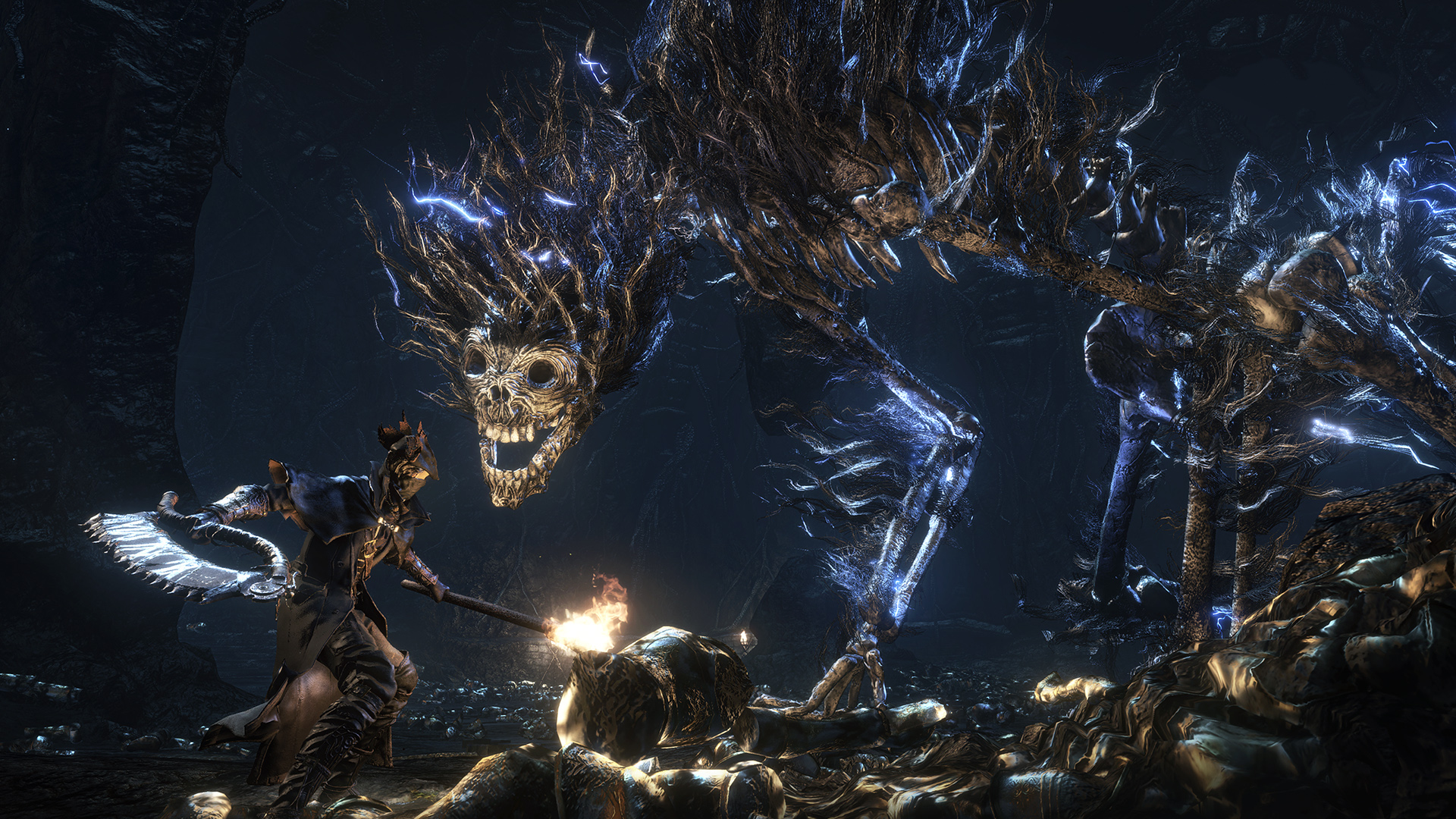
Slow Down; You Move Too Fast
Fast-paced combat comes at a cost. Compared to the studio's previous games, From Software streamlined Bloodborne from the ground up. Your hunter has fewer stats to invest in. There's less equipment lying around, and only one shop. Weapons have only one upgrade path (although you can customize them with gems and runes); you can't upgrade armor at all.
Demon's Souls and the two Dark Souls games could, indeed, get too far into the weeds, but that wonderful, hideous complexity held much of the games' richness. The protagonists were very uniquely yours; in Bloodborne, making your perfect character is pretty simple.
You can hold more healing items right from the start, and they take effect almost instantly. There are fewer multiplayer factions to join. Ranged combat is a complement, not a play style in and of itself. There's no penalty for dying, other than having to regain your blood echoes.
These changes do not actually make Bloodborne any easier than the last three games. The combat is still brutal, and you'll die dozens of times. But the character-building between levels feels much blander than it did in the earlier games.
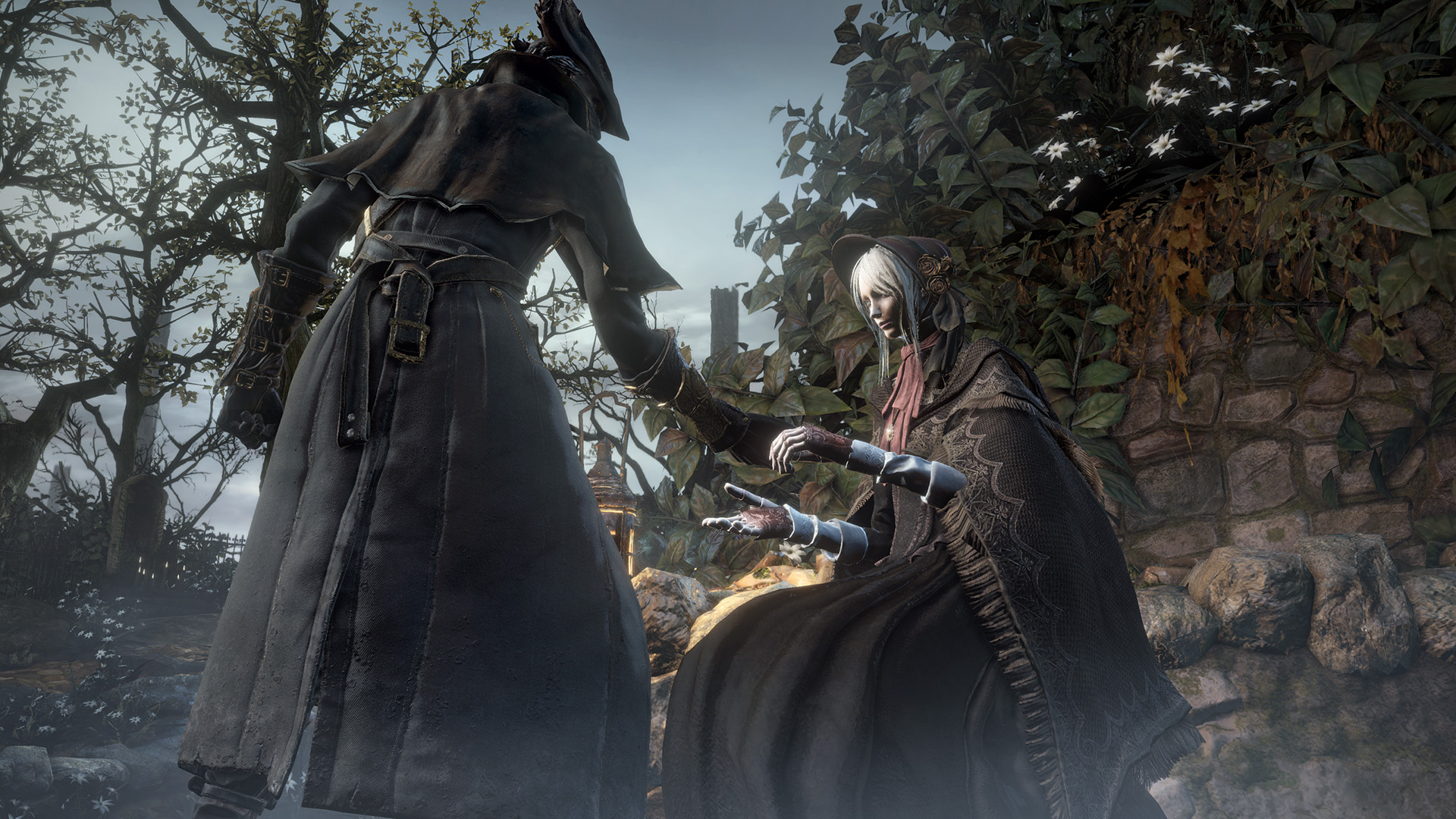
Story: Something Wicked This Way Comes
The ramshackle city of Yharnam is almost deserted. Inhuman beasts roam its streets. The once-magnificent houses, castles and churches have crumbled into disrepair. Only a few motley demon hunters, who infuse themselves with beast blood, stand between the city and total chaos, and many of them are just as murderous as their prey.
After a blood transfusion, you become a hunter, only to find that death lurks around every corner. Your only respite is the Hunter's Dream — an ethereal otherworld where a forlorn, almost-human Doll can channel blood echoes into strength.
The Souls series has a penchant for minimalist stories, and Bloodborne is no exception. You'll piece together Yharnam's backstory from snippets of dialogue with reticent characters, descriptions of equipment, a few scattered notes and the very occasional cutscene. The story itself is convoluted and opaque, but that's by design; when it all comes together, it's as good a reason as any to explore the city.
The problem with the story actually hearkens back to the game's dearth of equipment. Previous Souls games had so much lore that the loading screens (which, in Bloodborne, are very long) used to show characters, equipment and consumable items, all of which helped flesh out the world. Instead, loading screens now just show the Bloodborne logo, which didn't pique my curiosity about anything except when the game would finish loading.
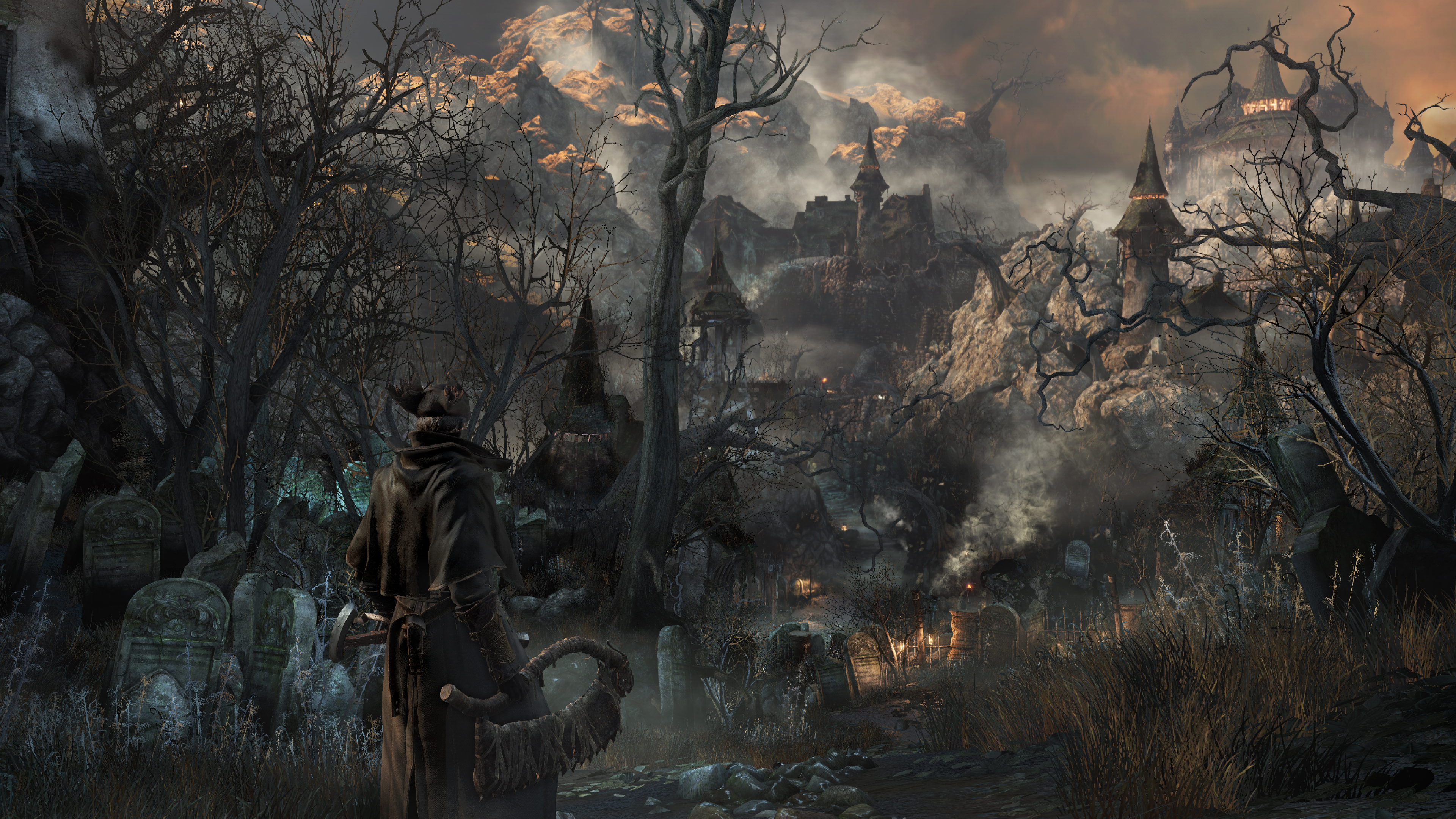
Graphics and Art: Yharnam Gothic
If you've kept up with the art and trailers for Bloodborne, the game sells itself largely on setting. Yharnam represents a weird fusion of Gothic horror and Victorian London, and From Software makes the combination look effortless. From eerie town squares to haunted woodlands to vast underground cities, every part of Yharnam feels unique and looks absolutely gorgeous — particularly since the game progresses from sundown to evening to midnight and beyond as you travel.
The level design, too, is something to behold. Bloodborne splits the difference between the completely interconnected world of Dark Souls and the four distinct, branching paths of Dark Souls II. Although there are four tiers of areas, and you can often choose the order in which to tackle them, they connect in clever and unexpected ways. Yharnam and its surrounding areas feel authentic and lived-in.
Character design and textures are, unfortunately, not up to the same standard. Clothing looks a little too slick, especially once it's been splashed with blood. (If you've ever gotten blood on your clothing, you can attest that it is not very shiny.) Despite the deep character-creation system, it's also extremely difficult to make a character who doesn't look strange — but perhaps that's the point. Bloodborne is a very pretty game about a very ugly world.
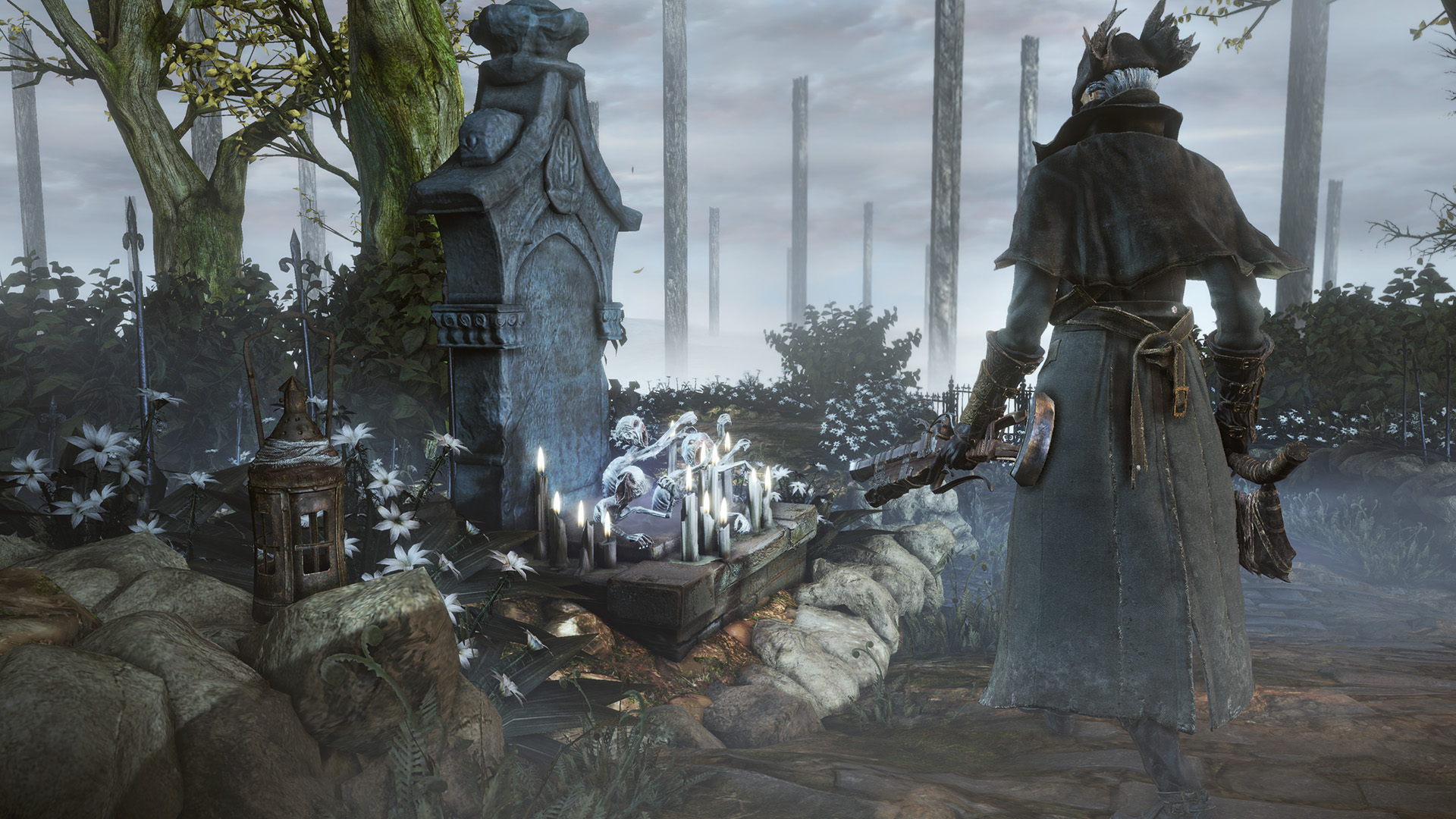
Music and Sound: Background Noise
Although it's an action/role-playing game through and through, Bloodborne takes a lot of influences from the horror genre. As such, sound design is a crucial part of the experience, and the game excels on this front. Music is usually sparse and minimalistic. That way, on the few occasions that you do hear it — such as eerie chanting in a forgotten prison, or a sweeping choir during a climactic boss fight — you sit up and take notice.
MORE: 'Dark Souls II': Read This Before Playing
The voice acting is fine, but the sound effects are where the game stands out. A distant bell or a low moan is sometimes all it takes to get your heart pounding, making you terrified of what's just beyond the next darkened corner or locked, thumping door. The sounds of battle, monsters and even the environment itself are all calibrated to keep you on your toes, and they do an excellent job.
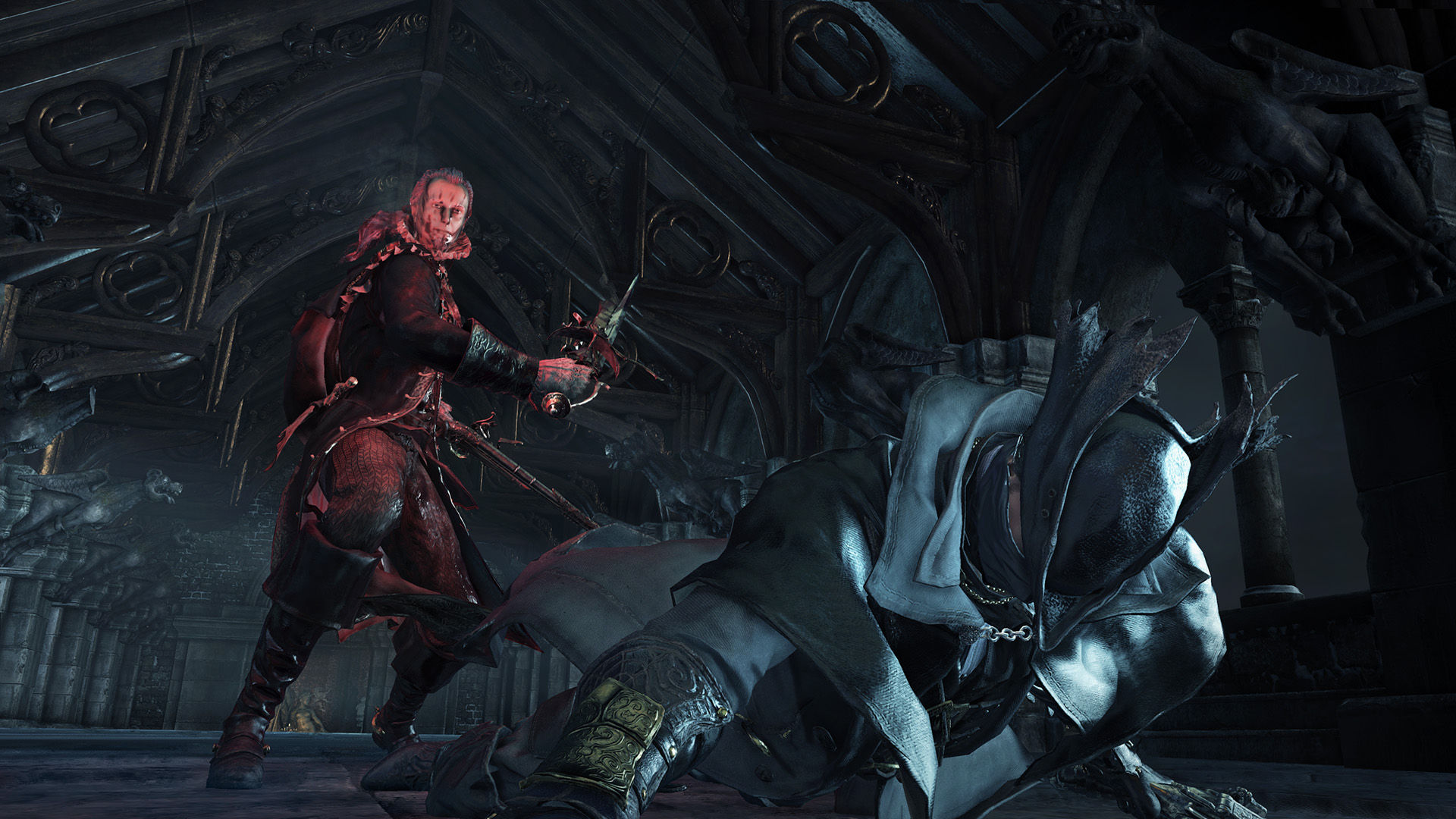
Bottom Line: Bless Us with Blood
Bloodborne is in the unenviable position of being a great game that's not quite as great as its predecessors. Making the game more accessible was probably necessary, especially since Bloodborne isn't just another action/RPG — it's one of the selling points of buying a PS4 instead of an Xbox One. A company can't promise the next big thing and deliver a game that few people can complete. Still, for longtime fans, it feels like a step down, albeit not a catastrophic one.
Besides, Bloodborne gets just about everything else fantastically right. The fast-paced combat feels fluid and exciting, without sacrificing the bone-crushing difficulty of earlier games. Yharnam is an amazingly otherworldly place to explore for a few dozen hours. Visual and audio elements are mostly top-notch.
If you go into Bloodborne expecting Dark Souls III, you'll come out disappointed. But if you, like From Software, are willing to try something new, it's hard to put this game down. The newcomers out there should pick this one up. If you like it, there are three more where that came from.

Marshall Honorof was a senior editor for Tom's Guide, overseeing the site's coverage of gaming hardware and software. He comes from a science writing background, having studied paleomammalogy, biological anthropology, and the history of science and technology. After hours, you can find him practicing taekwondo or doing deep dives on classic sci-fi.
-
James87Raymond This game is costing 60$ , my niece is still playing XBOX 360.. I will have to heighten my budget , but anyways writer worked harder in making people understand this particular Game.. BravoReply -
DecafTable Been playing since Demon souls on PS3. I enjoyed the slow pace, which meant you had to take the environment in and learn from it. The art direction here looks great, with an atmosphere that I could fall in love with. I'm a bit worried the hectic frantic rush rush might dissuade my purchase. Thanks for the in depth article!Reply -
Marshall Honorof @DecafTable - I wouldn't worry too much about the faster pace of combat. If you liked the previous games, Bloodborne's combat has way more similarities than differences. I actually enjoyed the chance to regain health on-the-fly, although boss fights can get a little button-mash-y.Reply
The bottom line is that I loved Demon's Souls, Dark Souls, and Dark Souls II, and Bloodborne definitely felt true to them. I imagine you'll like it as well, especially the exploration and the environments. -
silvaring This is the best Bloodborne review I've read so far, even better than the Forbes one. Your analogy about the weeds is so spot on and appropriate, and kudos for picking up the boring loading screen issue. Bloodborne doesn't look as good as the first 2 souls games, for the following reasons - 1) health looks too easy to come by, 2) enemy groups can be nerf killed by shooting and luring one enemy at a time making a lot of the game too easy, 3) movement speed has been nerfed and instead of multiple speeds based on weight youre just stuck with one. These are three pretty major design issues I feel, but I could be wrong about how they affect the overalll experience as I havent played through the game yet.Reply -
Nate Jones Silvaring, your wrong on all counts. Play the game before critiquing how it plays. 1) blood vials are not always easy to come by. You can have 20 of them, each filling 25% of you bar. But when you are out exploring through a level, they get used up quickly as you make mistakes, get into trouble. Many enemies can kill you in a few hits, and their AI andmob tactics are strong. You will die, you will run out of blood vials when you are far from safety and bloodborne is as lethal as the souls games. 2) some groups early in the game can be lured, but it's more complex than that. Groups patrol. Some enemy hunt you down. Then there is other players to deal with. You can be luring one enemy at a time, only to have eight guys come up behind you and pinch you between two groups or get you trapped in a bind. 3) there is no encumberance, you move quickly. Movement not nerfed. The clothing and weapons you are using are all roughly similar. It's not the kind of game where you customize a big heavy or quick light character.Reply
Bloodborne is an excellent game. I've played all of the souls series. This one is worthy with new twists. If you enjoy the previous games, you'll enjoy this one too. -
silvaring Thanks for clarifying that Nate, I realized a few days after posting that I was wrong about the vials, this was an early post on the game and I didn't read enough impressions to get a full overview. I still think they nerfed movement speed though, it adds a beautiful element to the game when you can move at different speeds depending on your strategic decisions, and I don't like the one size fits all approach they've taken. Thanks for clarifying the A.I tactics.... sounds delightful :)Reply15675397 said:Silvaring, your wrong on all counts. Play the game before critiquing how it plays. 1) blood vials are not always easy to come by. You can have 20 of them, each filling 25% of you bar. But when you are out exploring through a level, they get used up quickly as you make mistakes, get into trouble. Many enemies can kill you in a few hits, and their AI andmob tactics are strong. You will die, you will run out of blood vials when you are far from safety and bloodborne is as lethal as the souls games. 2) some groups early in the game can be lured, but it's more complex than that. Groups patrol. Some enemy hunt you down. Then there is other players to deal with. You can be luring one enemy at a time, only to have eight guys come up behind you and pinch you between two groups or get you trapped in a bind. 3) there is no encumberance, you move quickly. Movement not nerfed. The clothing and weapons you are using are all roughly similar. It's not the kind of game where you customize a big heavy or quick light character.
Bloodborne is an excellent game. I've played all of the souls series. This one is worthy with new twists. If you enjoy the previous games, you'll enjoy this one too.
